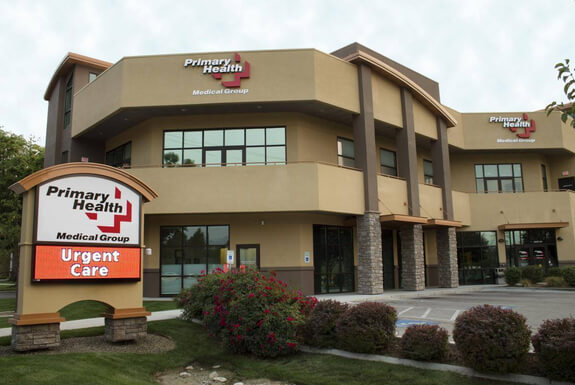Understanding the Function of Urgent Care in Providing Timely Treatment for Non-Life-Threatening Conditions
Urgent treatment centers have actually arised as an important part of the health care landscape, resolving the instant needs of individuals with non-life-threatening problems. Comprehending the nuances of immediate treatment could significantly affect patient end results and the overall performance of health care delivery.
What Is Urgent Treatment?
Urgent treatment refers to a group of medical solutions developed to resolve non-life-threatening problems that need prompt focus. These centers work as an intermediary between medical care physicians and emergency rooms, using a convenient alternative for individuals that need punctual treatment without the extensive waiting times commonly connected with emergency divisions.
Urgent treatment facilities are typically staffed by physician, including medical professionals, registered nurse experts, and doctor aides, who are trained to identify and deal with a broad selection of problems. Typical services provided by these facilities consist of therapy for minor injuries, illnesses, and infections, as well as diagnostic tests such as X-rays and lab job.
The availability of urgent care is an essential consider its charm, as lots of centers run past normal workplace hours, including weekend breaks and evenings. This extensive schedule permits people to obtain timely treatment when their health care copyright may not be easily accessible. Additionally, urgent care facilities frequently accept walk-in people, eliminating the requirement for visits. On the whole, immediate care plays an essential function in the medical care system, making sure people can access essential clinical services without delay and successfully.

When to look for treatment at an urgent care facility rather of a key care doctor or an emergency situation area,Numerous individuals might locate themselves uncertain concerning. Urgent treatment is made to attend to non-life-threatening conditions that call for prompt interest but are not severe enough to necessitate an emergency clinic go to.
Normally, one ought to think about immediate treatment for concerns such as minor fractures, strains, cuts needing stitches, or infections like urinary system tract infections. Additionally, cool or influenza signs and symptoms, rashes, and allergic responses can also be properly managed in this setting.
It is very important to note that immediate care is not ideal for serious emergencies, such as chest discomfort, trouble breathing, or serious bleeding, which demand prompt emergency situation room treatment.
People that lack access to a medical care physician or can not safeguard a prompt visit may likewise benefit from immediate care services. Inevitably, recognizing when to utilize urgent treatment can lead to more efficient health care shipment, permitting patients to receive the proper degree of treatment based upon their particular health and wellness demands.
Benefits of Urgent Treatment Centers
Choosing immediate care facilities for non-life-threatening conditions offers several benefits that boost patient experience and access. One key advantage is the lowered delay times contrasted to typical emergency clinic. Urgent care centers typically run on a first-come, first-served basis, allowing patients to get prompt medical attention without the long hold-ups usually connected with medical facility setups.
In addition, urgent treatment facilities offer prolonged hours, consisting look at this website of evenings and weekend breaks, suiting individuals with differing routines. This adaptability ensures that people can look for care when it is most convenient for them, further advertising timely treatment.

In addition, these centers frequently provide an extensive variety of services, including diagnostic examinations and minor treatments, all under one roof. This loan consolidation of solutions not only streamlines the client experience however likewise cultivates a much more cohesive approach to managing non-life-threatening wellness concerns, eventually profiting general client end results.
Typical Conditions Treated
At immediate care centers, a range of non-life-threatening problems can be successfully dealt with, providing patients with timely and obtainable medical aid. These facilities are specifically proficient at attending to issues that call for timely attention yet do not present a prompt risk to life or arm or leg.
Typical conditions dealt with at immediate treatment facilities include small injuries such as cracks, pressures, and strains. Urgent treatment facilities are outfitted to execute necessary analysis tests, such as X-rays and laboratory tests, enabling them to provide detailed treatment.
Moreover, immediate treatment companies can provide inoculations, aiding to stop the spread of infectious conditions - Urgent Care. They likewise use solutions for small treatments, such as suturing wounds or draining pipes abscesses. By using these varied solutions, immediate care facilities play a crucial role in linking the void in between health care and emergency situation solutions, guaranteeing patients get prompt treatment for a large variety of conditions see this website without the requirement for long wait times usually linked with emergency clinic
Just How Urgent Care Sustains Health Care System
Immediate care centers play a crucial duty in sustaining the total medical care system by relieving the problem on emergency departments and providing prompt access to clinical care for non-life-threatening conditions. By managing situations such as small injuries, infections, and illnesses, immediate treatment facilities allow emergency situation divisions to concentrate on more crucial individuals requiring instant attention.
Moreover, urgent treatment centers improve medical care ease of access, providing prolonged hours and an extra practical alternative to typical medical care settings. This access is particularly advantageous for patients that might not have a normal doctor or who require immediate treatment beyond typical office hours. Because of this, urgent care facilities properly minimize improve and wait times individual contentment.
In addition, immediate care centers add to cost savings for both clients and the medical care system by supplying lower-cost services compared to emergency situation divisions. This economic efficiency is essential in a period of rising health care costs, enabling patients to get necessary treatment without sustaining expensive costs.
Verdict
Finally, urgent treatment facilities play an important duty in the healthcare system by supplying timely therapy for non-life-threatening problems. By linking the void between health care and emergency clinic, these facilities guarantee that patients get timely clinical interest without the lengthy delay times commonly connected with emergency departments. The availability and effectiveness of immediate treatment centers add considerably to reducing the total worry on medical care resources, boosting individual outcomes, and advertising a more reliable health care shipment system.
Immediate care facilities have arised as an important part of the healthcare landscape, dealing with the immediate requirements of patients with non-life-threatening problems. Immediate care brows through normally sustain reduced out-of-pocket expenses contrasted to emergency situation department brows through, making care extra inexpensive for patients without endangering top quality. Urgent care centers are equipped to perform needed analysis tests, such as X-rays and research laboratory examinations, allowing them to provide comprehensive care.
By providing these varied solutions, immediate treatment centers play a vital duty in linking the void in between primary treatment and emergency situation solutions, making certain people get timely therapy for a wide variety of problems without the need for lengthy wait times normally connected with emergency situation areas.
Furthermore, urgent treatment centers boost healthcare ease of access, using prolonged hours and a much more practical alternative to standard key care settings.
 Alicia Silverstone Then & Now!
Alicia Silverstone Then & Now! Joshua Jackson Then & Now!
Joshua Jackson Then & Now! Michael C. Maronna Then & Now!
Michael C. Maronna Then & Now! Gia Lopez Then & Now!
Gia Lopez Then & Now! Stephen Hawking Then & Now!
Stephen Hawking Then & Now!